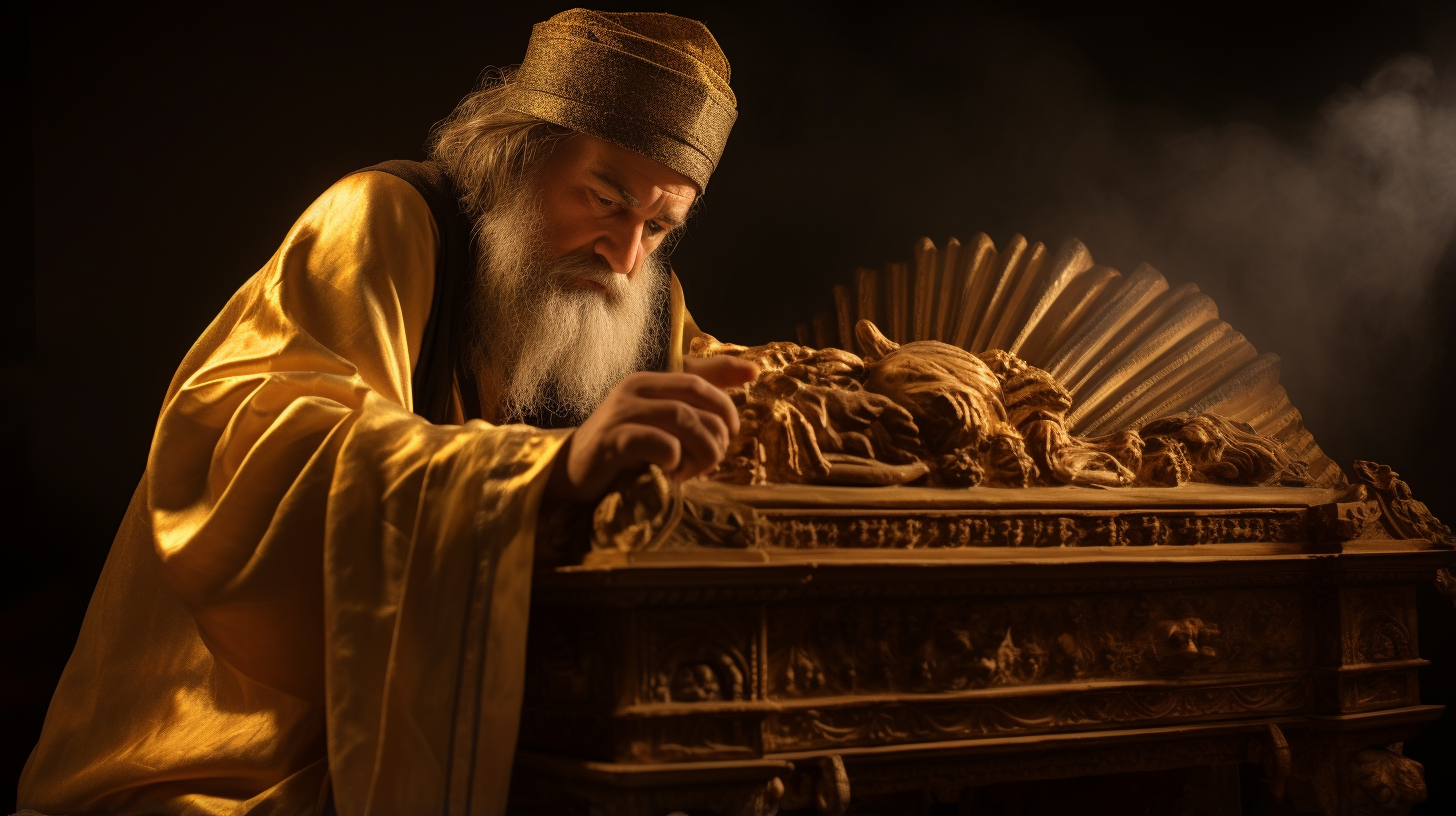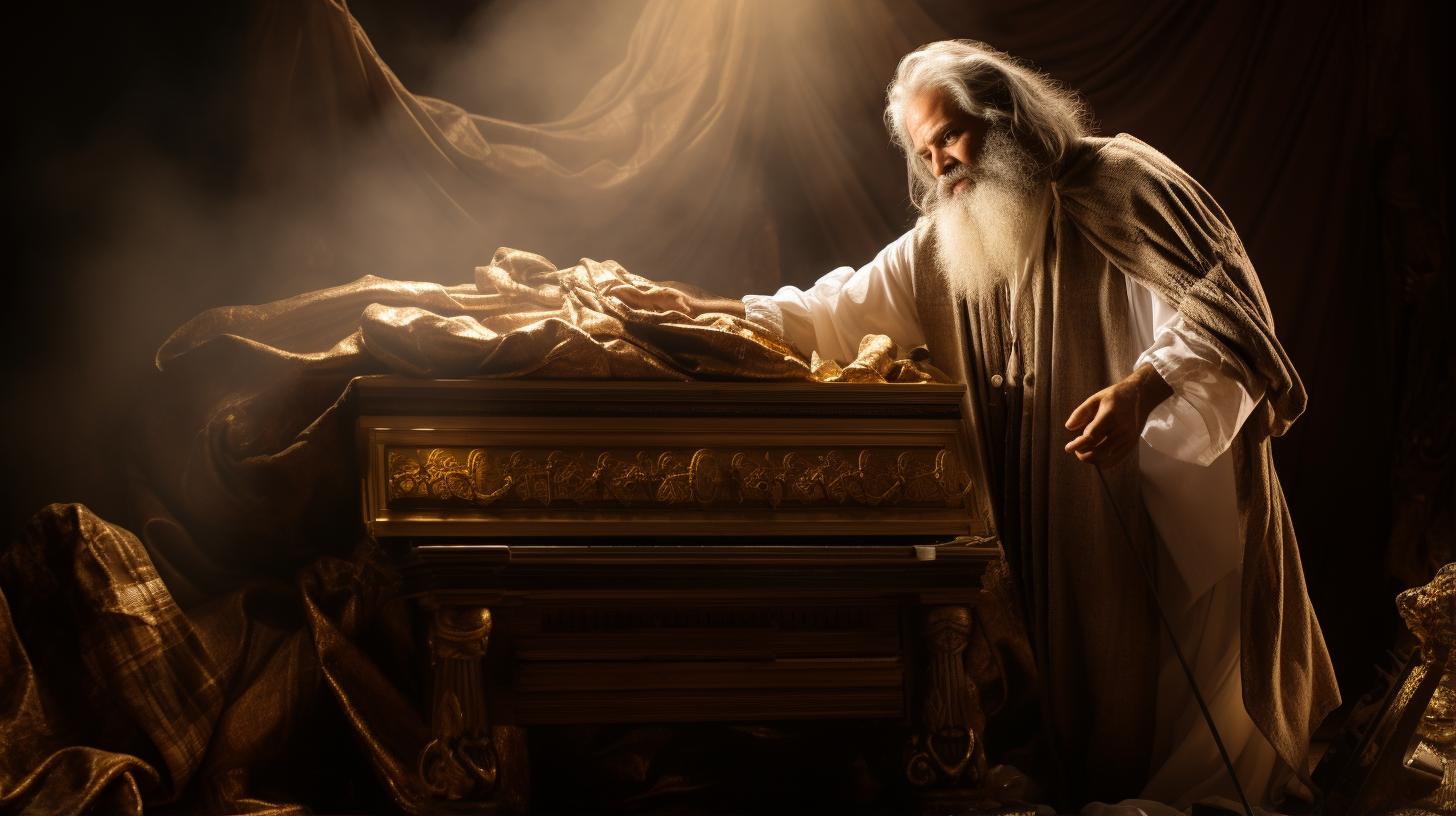Within the vast tapestry of history, legends and myths emerge that spark the mind and urge us to rethink our perceptions of ancient societies. An intriguing mystery shrouds a sacred artifact, the Ark of the Covenant, and the extraordinary odyssey of Moses atop Mount Sinai during the 15th century BC, chronicled in the Book of Exodus.
Mount Sinai, a place steeped in significance, serves as the backdrop where, as ancient scriptures tell, God beckoned Moses. In this divine rendezvous, Moses was bestowed with two stone tablets bearing the Ten Commandments.
The narrative, however, extends beyond this juncture. In addition to the commandments, Moses was bestowed with intricate guidelines for constructing the Ark of the Covenant.

This enigmatic relic, far from being a mere container, was devised to enshroud the luminous Ten Commandments, infused with celestial potency by the touch of God’s own hand. It epitomized a sacred pact between the Almighty and the Israelites: safeguarding in return for their fidelity to His laws.
Yet, what raises the Ark of the Covenant from a mere vessel of commandments to an enigmatic entity is its role as the terrestrial throne of God. According to the teachings of Exodus, God instructed Moses, saying, “Asuli mikdash bishakhanti betoham,” meaning “Make me a holy place, and I, God, will reside among them.”
Wherever the Ark ventured, the presence of God accompanied it. The meticulous construction of the Ark mimicked a celestial blueprint, measuring around three by five feet.
Its interior and exterior gleamed with gold, with two gold rings adorning each corner, facilitating its transportation using poles that were never to be detached.

The lid itself, crafted from gold and embellished with cherubim, angelic sentinels with wings at each end, beckons us to ponder: the significance behind such meticulous specifications and the rationale for a spiritual entity like God necessitating a physical throne on Earth.
To illuminate this enigma, we delve into a fascinating passage in biblical lore: Moses’ metamorphosis upon descending from Mount Sinai. It is said that his countenance had altered, compelling him to veil his face.
This transformation poses the question of what transpired on that hallowed peak. Was it an encounter with the divine, or did Moses encounter something or someone altogether different?
To delve deeper into this mystery, we must contemplate the depiction of God in biblical texts. He is portrayed as a being transcending earthly realms, in essence, extraterrestrial. The term “extraterrestrial,” while seemingly at odds in this context, presents a lens through which to fathom the encounters of ancient civilizations with a non-earthly entity.
Unraveling the enigmas of the Ark of the Covenant and Moses’ extraordinary sojourn leads us on a voyage to grasp the mystical ties between the divine and the mundane. These age-old narratives retain their allure, prodding us to probe the cryptic crossroads of faith, history, and the enigmatic unknown.
